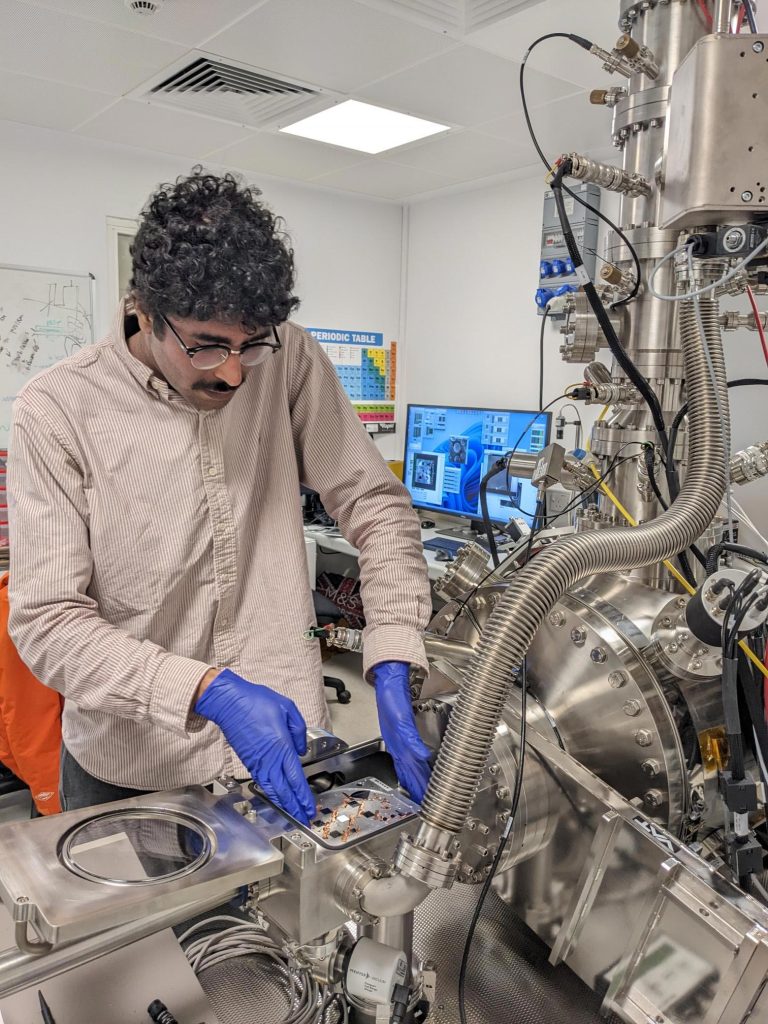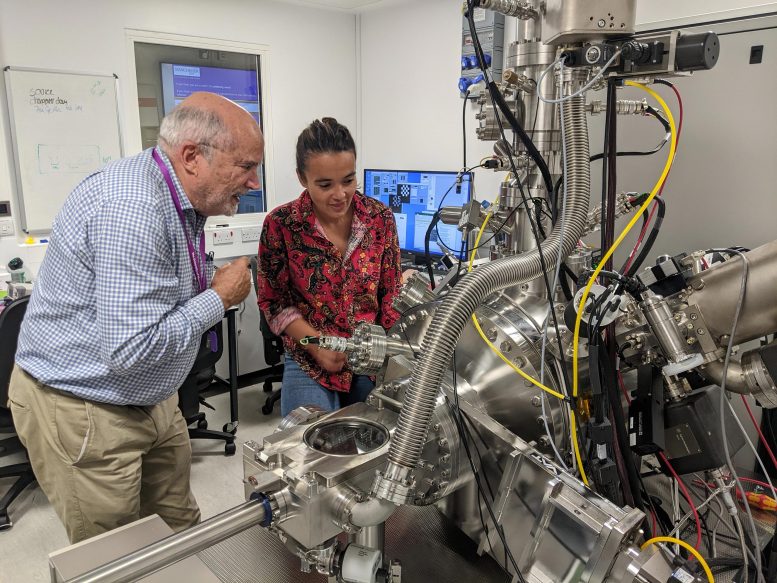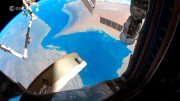A collaboration between the Universities of Melbourne and Manchester has led to a groundbreaking method for producing ultra-pure silicon, enhancing the potential for scalable and accurate quantum computers. This technique extends quantum coherence, significantly reducing computing errors and allowing for complex calculations that outpace traditional computers.
Researchers at the Universities of Melbourne and Manchester have invented a breakthrough technique for manufacturing highly purified silicon that brings powerful quantum computers a big step closer.
The new technique to engineer ultra-pure silicon makes it the perfect material to make quantum computers at scale and with high accuracy, the researchers say.
Enhancing Quantum Coherence
Project co-supervisor Professor David Jamieson, from the University of Melbourne, said the innovation – published today (May 7, 2024) in Communication Materials, a Nature journal – uses qubits of phosphorous atoms implanted into crystals of pure stable silicon and could overcome a critical barrier to quantum computing by extending the duration of notoriously fragile quantum coherence.
“Fragile quantum coherence means computing errors build up rapidly. With robust coherence provided by our new technique, quantum computers could solve in hours or minutes some problems that would take conventional or ‘classical’ computers – even supercomputers – centuries,” Professor Jamieson said.
A qubit – such as an atomic nucleus, electron, or photon – is a quantum object when it is in a quantum superposition of multiple states. Coherence is lost when the qubit reverts to a single state and becomes a classical object like a conventional computer bit, which is only ever one or zero and never in superposition.
Quantum bits or qubits – the building blocks of quantum computers – are susceptible to tiny changes in their environment, including temperature fluctuations. Even when operated in tranquil refrigerators near absolute zero (minus 273 degrees Celsius), current quantum computers can maintain error-free coherence for only a tiny fraction of a second.
University of Manchester co-supervisor Professor Richard Curry said ultra-pure silicon allowed construction of high-performance qubit devices – a critical component required to pave the way toward scalable quantum computers.
“What we’ve been able to do is effectively create a critical ‘brick’ needed to construct a silicon-based quantum computer. It’s a crucial step to making a technology that has the potential to be transformative for humankind,” Professor Curry said.

Lead author and joint University of Melbourne/University of Manchester PhD student Ravi Acharya prepares a silicon chip for enrichment in the University of Manchester P-NAME focused ion beam laboratory. Credit: University of Melbourne/University of Manchester
Silicon’s Role in Quantum Technology
Lead author Ravi Acharya, a joint University of Manchester/University of Melbourne Cookson Scholar, said the great advantage of silicon chip quantum computing was it used the same essential techniques that make the chips used in today’s computers.
“Electronic chips currently within an everyday computer consist of billions of transistors — these can also be used to create qubits for silicon-based quantum devices. The ability to create high quality silicon qubits has in part been limited to date by the purity of the silicon starting material used. The breakthrough purity we show here solves this problem.”
Professor Jamieson said the new highly purified silicon computer chips house and protect the qubits so they can sustain quantum coherence much longer, enabling complex calculations with greatly reduced need for error correction.
“Our technique opens the path to reliable quantum computers that promise step changes across society, including in artificial intelligence, secure data and communications, vaccine and drug design, and energy use, logistics, and manufacturing,” he said.
Silicon – made from beach sand – is the key material for today’s information technology industry because it is an abundant and versatile semiconductor: it can act as a conductor or an insulator of electrical current, depending on which other chemical elements are added to it.
“Others are experimenting with alternatives, but we believe silicon is the leading candidate for quantum computer chips that will enable the enduring coherence required for reliable quantum calculations,” Professor Jamieson said.

Co-authors (left) Prof David Jamieson (University of Melbourne) and (right) Dr Maddison Coke (University of Manchester) inspect the P-NAME focused ion beam system at the University of Manchester used for the silicon enrichment project. Credit: University of Melbourne / University of Manchester
Purifying Silicon for Quantum Computing
“The problem is that while naturally occurring silicon is mostly the desirable isotope silicon-28, there’s also about 4.5 percent silicon-29. Silicon-29 has an extra neutron in each atom’s nucleus that acts like a tiny rogue magnet, destroying quantum coherence and creating computing errors,” he said.
The researchers directed a focused, high-speed beam of pure silicon-28 at a silicon chip so the silicon-28 gradually replaced the silicon-29 atoms in the chip, reducing silicon-29 from 4.5 percent to two parts per million (0.0002 percent).
“The great news is to purify silicon to this level, we can now use a standard machine – an ion implanter – that you would find in any semiconductor fabrication lab, tuned to a specific configuration that we designed,” Professor Jamieson said.
Future Prospects and Impact
In previously published research with the ARC Centre of Excellence for Quantum Computation and Communication Technology, the University of Melbourne set – and still holds – the world record for single-qubit coherence of 30 seconds using silicon that was less purified. 30 seconds is plenty of time to complete error-free, complex quantum calculations.
Professor Jamieson said the largest existing quantum computers had more than 1000 qubits, but errors occurred within milliseconds due to lost coherence.
“Now that we can produce extremely pure silicon-28, our next step will be to demonstrate that we can sustain quantum coherence for many qubits simultaneously. A reliable quantum computer with just 30 qubits would exceed the power of today’s supercomputers for some applications,” he said.
This latest work was supported by research grants from the Australian and UK governments. Professor Jamieson’s collaboration with the University of Manchester is supported by a Royal Society Wolfson Visiting Fellowship.
A 2020 report from Australia’s CSIRO estimated that quantum computing in Australia has potential to create 10,000 jobs and $2.5 billion in annual revenue by 2040.
“Our research takes us significantly closer to realizing this potential,” Professor Jamieson said.
Reference: “Highly 28Si enriched silicon by localised focused ion beam implantation” by Ravi Acharya, Maddison Coke, Mason Adshead, Kexue Li, Barat Achinuq, Rongsheng Cai, A. Baset Gholizadeh, Janet Jacobs, Jessica L. Boland, Sarah J. Haigh, Katie L. Moore, David N. Jamieson and Richard J. Curry, 7 May 2024, Communications Materials.
DOI: 10.1038/s43246-024-00498-0








Be the first to comment on "Ultra-Pure Silicon Chip Sparks a Quantum Computing Revolution"